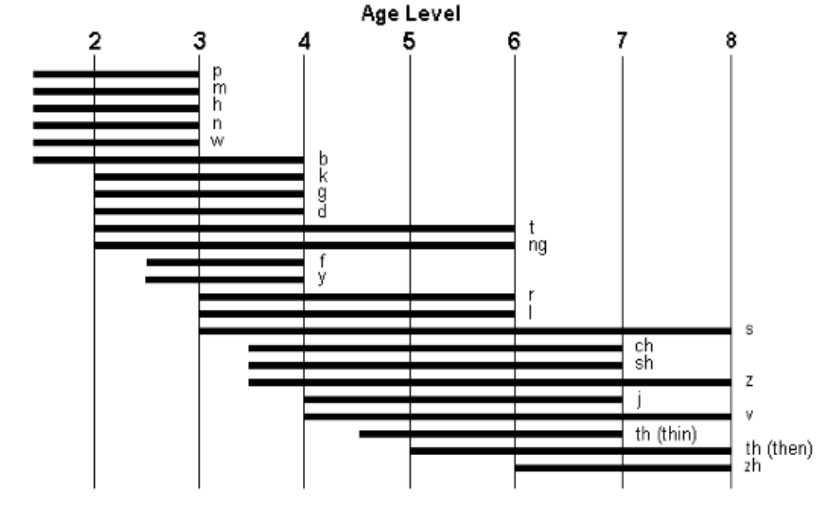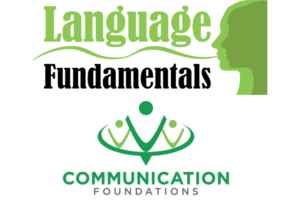Many parents are often concerned about their child’s speech intelligibility and whether or not unfamiliar listeners will understand them. When toddlers are just learning to talk, they often require ample repetition and time before achieving target sounds. There is a wide range of “normal” articulation development in regard to when a child will master different sounds. Below is a chart showing the norms for speech sound development [1]. This set of norms can be helpful in determining whether or not speech therapy would be appropriate. Please keep in mind that with developmental skills there is no definitive number, but a “range of average”!

Speech therapists in early intervention, may not directly implement articulation therapy, as many children present with developmental errors which are typical for toddlers! When looking at the chart above, we would not expect a child who is two years old to produce the /r/ sound. Most children don’t develop this particular sound until later in age. For example, if a toddler approximates “gween” for “green,” this would be considered an age appropriate error.
In early intervention, the speech-language pathologist will focus more on keeping communication attempts positive through imitation of sounds or words, approximating single words, and putting words together to form short phrases.
How much of my child’s speech should I be able to understand?
In addition to speech sounds, intelligibility is another factor to consider as well. This means how much of your child’s speech you understand, compared to what you cannot. Below is a range of how intelligible toddlers should be according to their age:
2 years: 50% intelligible
3 years: 75% intelligible
4 years: 100% intelligible
If your child has so many errors that they can’t be understood, it is recommended you have them evaluated by a speech-language pathologist, especially if these errors are persisting after 3-years old.
What can I do with my toddler to help their clarity of speech?
The best thing a parent can do with their child at this age is to make sure they are modeling words correctly for imitation. Avoid correcting your toddler, but rather provide correct models and emphasize target sounds. Again, for example, if they say “gween” for “green,” you can say, “Yes, the tree is green!” Slow down your rate of speech and over-articulate the sounds in each word.
If you have any concerns or questions regarding your child’s intelligibility (clarity of speech) seek an evaluation. An articulation evaluation during their ages 3-5 preschool program could be an option.
About the author:
Jacqueline Pfeiffer, M.S. CCC-SLP earned her B.S. in Psychology at The State University of New York College at Oneonta and M.S. in Speech-Language Pathology from Sacred Heart University. Jacqueline provides Early Intervention Speech Therapy Services to children ages 0-3 in Westchester County.
Reference:
[1] Sander, Eric K. “When Are Speech Sounds Learned?” Journal of Speech and Hearing Disorders, vol. 37, no. 1, 1972, pp. 55–63., doi:10.1044/jshd.3701.55.



